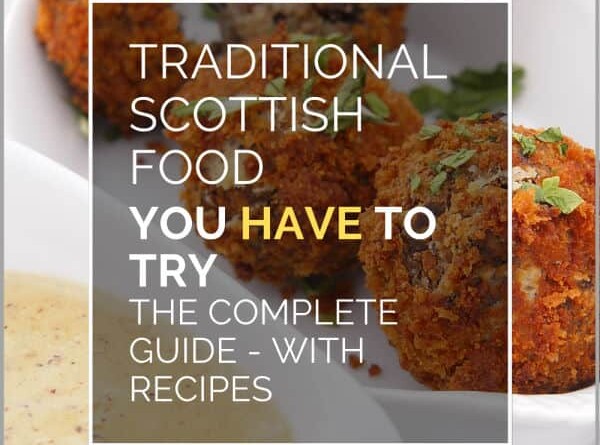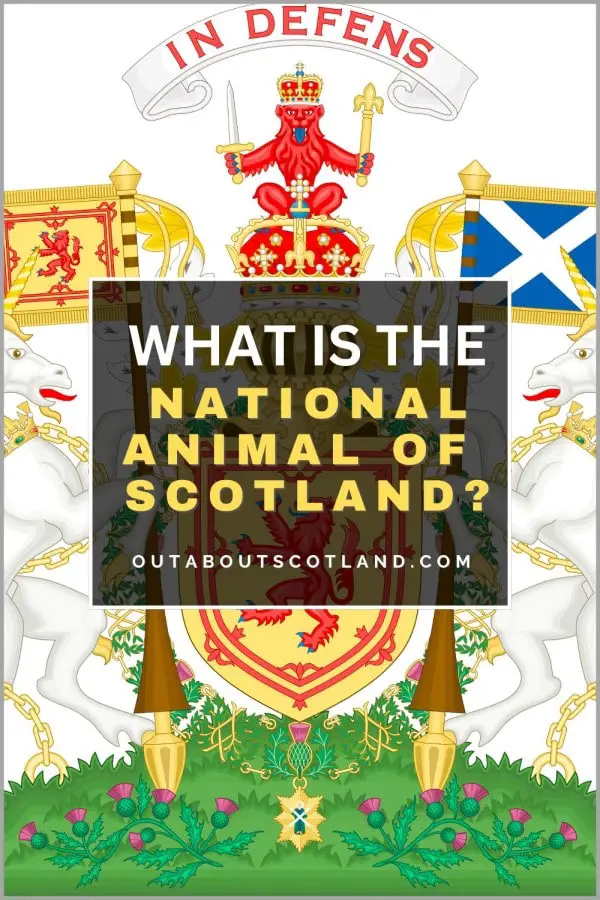Thanks to a temperate climate and fertile soil, Scotland has a natural larder full of edible plants, berries, and livestock, which is why so many delicious soups, broths, puddings, and oat-based dishes are staples of the Scottish diet. In this article, you’ll find recipes for a collection of traditional Scottish dishes, from hearty main meals to deliciously sweet desserts.
Clapshot
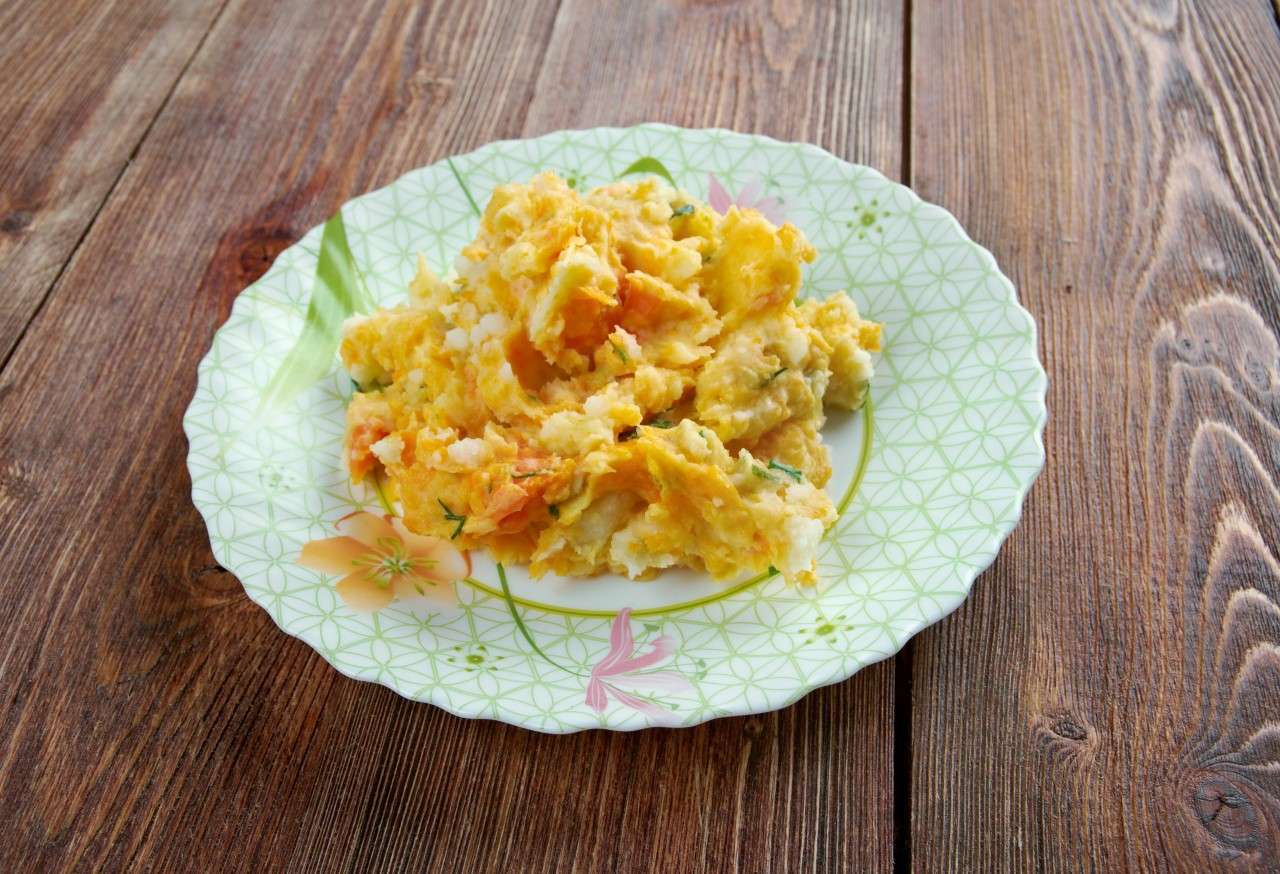
What Is It?
This is a simple vegetable dish that originated in Orkney but moved south and is now enjoyed in Scottish households throughout the land. It’s basically posh mashed potato with swede, turnips, chives, onions, and lashings of butter and cream mixed in.
It’s often served with haggis as an alternative to neeps and tatties (mashed Swedish and potatoes), but you can eat it with anything. While Scotland isn’t particularly well-known for its vegetable dishes, this one seems to work well with practically any type of meat you want to add to it. And it’s fantastic with a big dollop of thick beef gravy poured over it.
Fun fact: In Orkney, Clapshot is usually eaten with oatcakes.
Ingredients
- 1 pound baking potatoes, peeled and cubed.
- 3/4 pound turnips, peeled and cubed.
- 1/4 pound carrots, peeled and cubed.
- 1 onion, chopped.
- 1 teaspoon salt.
- 2 tablespoons butter, cubed.
- 3 tablespoons heavy cream.
How Do I Make It?
- Place the potatoes, turnips, carrots, onion, and salt in a big pan, fill with water to cover the vegetables, and bring to a boil over gh heat.
- Reduce the heat to medium-high and boil the vegetables until tender for 20 to 25 minutes. Drain and mash the vegetables with a potato masher. Spoon the mashed vegetables into a serving dish, and stir in the butter and cream.
Tablet
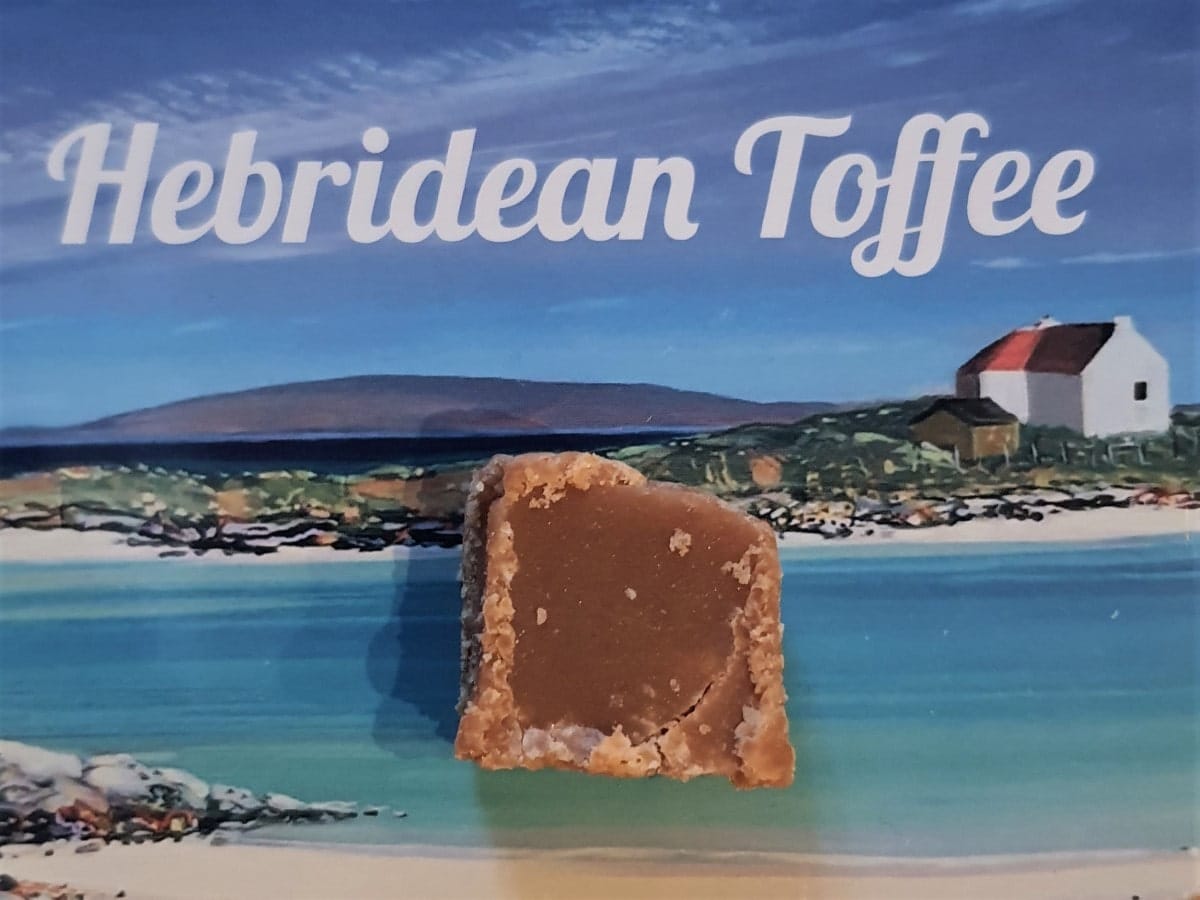
What Is It?
A friend to the wallets of Scottish dentists for many decades, eating tablets is more or less like eating an entire bag of sugar, albeit one that tastes amazing! Think of it as something along the lines of a hard fudge, with the main ingredients of sugar, butter, and condensed milk just like you find in ‘normal’ fudge.
Tablet, however, has a semi-hard, grainy texture that’s quite unlike its soft cousin, and somehow it tastes all the better for it. As a top tip, splash in a few drops of vanilla essence to bring out the sweetness.
Fun fact: The first recipe for Scottish tablet dates back to the early 1700s.
Ingredients
- 3 1/2 tablespoons sweetened condensed milk.
- 3/4 cup water.
- 2 cups white sugar.
- 1/4 cup unsalted butter.
How Do I Make It?
- Prepare an 8-inch square pan by coating with butter.
- Place the milk, water, sugar, and butter into a large saucepan. Bring to a boil over a medium heat, stirring continuously. Turn the heat to low, and continue to simmer until it reaches between 112 to 116°C.
- Once the temperature is reached and the tablet has turned a dark tan colour, remove it from the heat and let it stand for 5 minutes.
- Beat the tablet mixture with an electric hand mixer for five minutes, until it cools and begins to harden. Pour it into the prepared pan, and score into serving-size pieces while it is still soft. Allow it to cool until it’s completely set.
Stovies
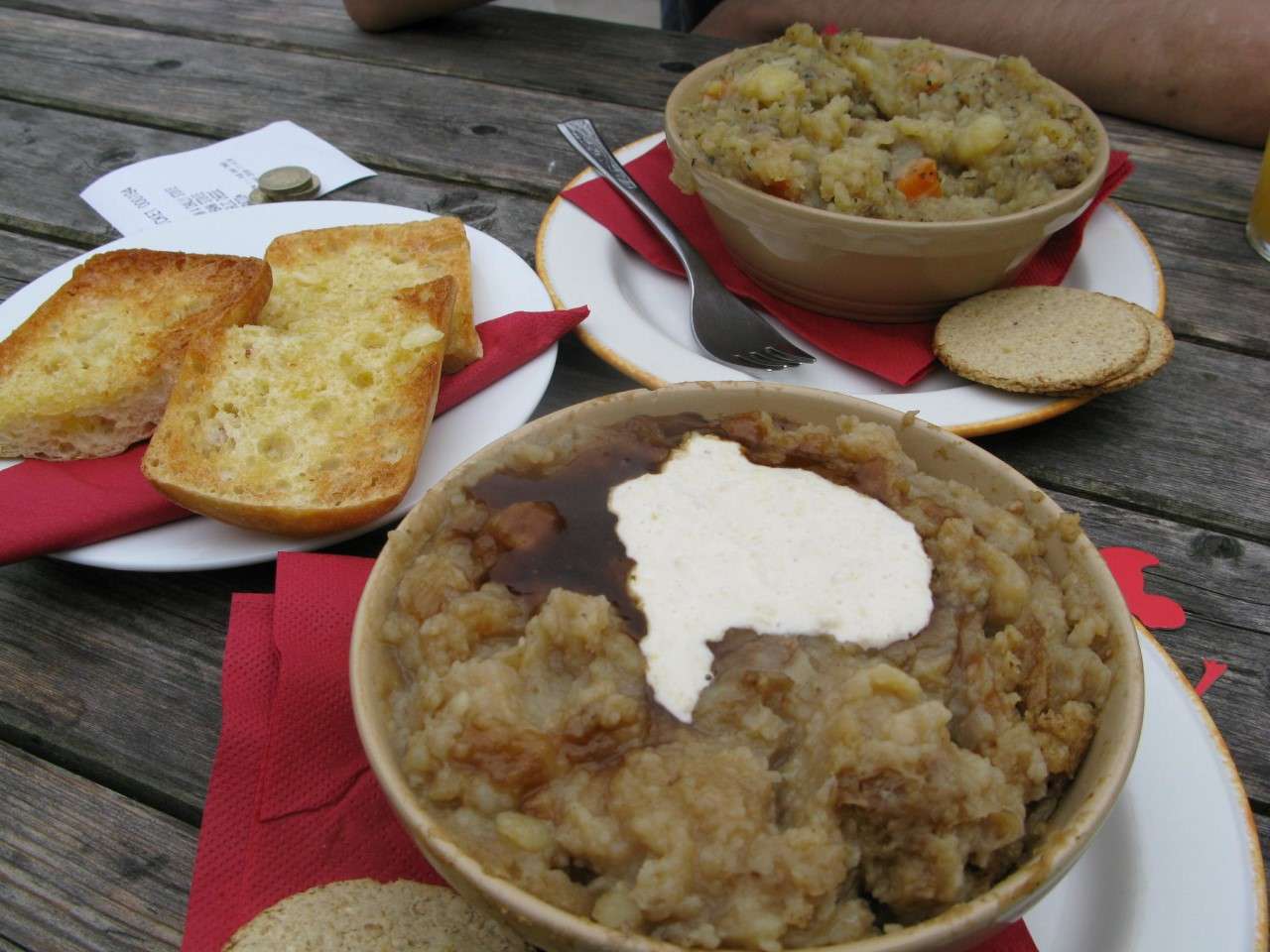
What Is It?
I’ll be the first to admit that when I first saw a spoon of stovies splat down onto my plate, my heart sank – at least until I tried some – because it’s just a Scottish variant of an English dish that I pretty much grew up on.
One of my favourite meals as a child was corned beef hash, which is made from all the leftover veggies from yesterday’s meal mixed up with corned beef. Stovies is more or less the same thing as corned beef hash, but served with oatcakes and using sausages, beef, or other meat instead of corned beef.
Add in a few vegetables as a side, and you have a traditional Scottish dinner that will warm you up for hours in the cold winter evenings, and it’s even relatively healthy.
Fun fact: ‘to stove’ means ‘to stew’ in Scots.
Ingredients
- 6 large potatoes, peeled and cubed.
- 1 cup milk.
- 1 tablespoon butter.
- 1 large onion, roughly chopped.
- 12 ounces of sausages or beef, cut into chunks.
- salt and pepper to taste.
How Do I Make It?
- In a saucepan, combine the potatoes and milk. Bring to a boil, reduce heat, and simmer until the potatoes are tender.
- While the potatoes are simmering, melt some butter in a pan over a medium-high heat. Cook the onions until they’re soft.
- When the potatoes are soft, mix in the onions and meat chunks. Cook for an additional 10 minutes or until heated through. Season with salt and pepper.
Cranachan
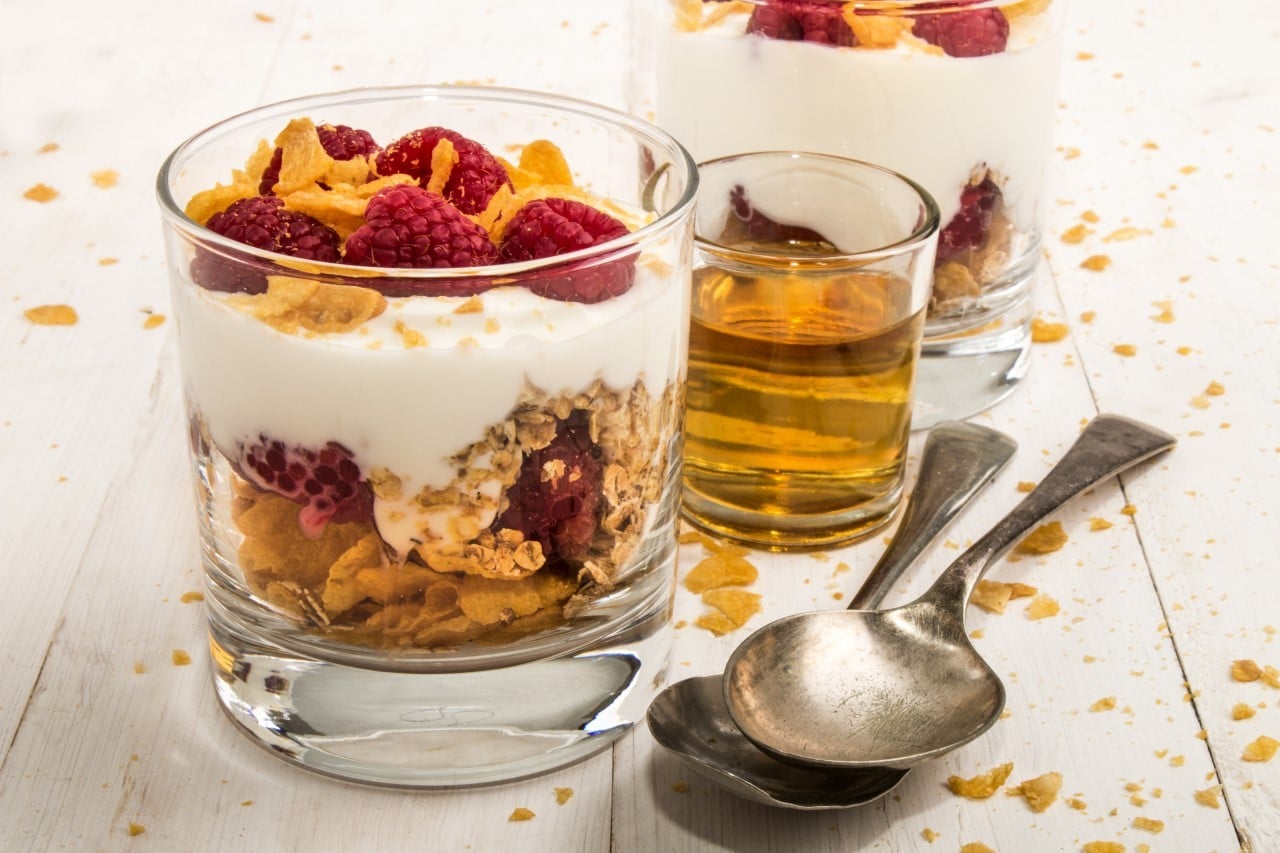
What Is It?
Cranachan is the reason why I know God is Scottish because no mere mortal could come up with such an amazingly tasty culinary treat.
Cranachan is a traditional Scottish dessert that was originally created to celebrate harvest time in Scotland, which meant that in days gone by it was only ever served in June. Thankfully, they decided it was too good to eat for only one month of the year, and now it’s served as a standard dessert.
Raspberries, cream, sugar, oats, and whisky are mixed into an artery-clogging goo that’s possibly the most Scottish dessert you could ever imagine, but one that rivals any other. Try it after your meal with freshly brewed black coffee for the ultimate indulgent treat.
Fun fact: Cranachan is traditionally served by bringing the separate ingredients out to the table so that each person can create their own dessert.
Ingredients
- 1/2 cup rolled oats.
- 1 cup thick cream.
- 1/4 cup sugar.
- 1/4 cup Scotch whisky.
- 1/2 teaspoon vanilla extract.
- 1 cup fresh raspberries.
- 4 fresh mint leaves for garnish (optional).
How Do I Make It?
- Preheat the oven to 175°C. Spread the oats out in a thin layer on a baking sheet and then toast them in the preheated oven for about 10 minutes, or until nut-brown. Set aside to cool.
- In a medium bowl, whip the cream to firm peaks, but not so it’s grainy. Gently fold in the sugar, vanilla and toasted oats. Spoon into 4 serving bowls, and top with fresh raspberries. Drizzle a good amount of whisky over each serving. Garnish with a mint leaf.
Cullen Skink

What Is It?
Continuing with the theme of arterial wall-thickening is this next dish, Cullen Skink, a fish broth that’s so thick and creamy that after eating a bowl, you probably won’t want to eat another thing for the rest of the day. The fact that it has double cream mixed into it practically screams that it originates from Scotland.
Cullen skink is usually served as a starter, but it also works well when served with big pieces of crusty bread as a main meal. While it’s quite smokey thanks to the haddock, the flavours of the cream perfectly complement the potatoes and onions, which make up the bulk of the soup. It’s definitely a winter warmer that can be enjoyed at any time of the year.
Fun fact: The village of Cullen in Moray is home to the Cullen Skink World Championships, a competition where cooks from across the globe compete to prepare the world’s tastiest bowl of Cullen Skink. You can learn all about the village of Cullen in my complete guide to Cullen.
Ingredients
- 2 pounds smoked haddock fillets.
- 2 1/2 cups milk.
- 1/2 cup double cream.
- 2 large potatoes, peeled and diced
- 1 large onion, finely chopped.
- Ground black pepper to taste.
- 2 tablespoons chopped fresh parsley for garnish.
How Do I Make It?
- In a saucepan over a medium heat, combine the haddock, milk and cream. Simmer for about 15 minutes, or until the fish flakes easily with a fork. Remove the fish and set it aside in a bowl. Add the potatoes and onion to the milk/cream mixture and simmer for about 10 minutes until tender.
- Transfer the contents of the pan to a blender and blend until it’s smooth and creamy. Scoop the mixture back into the pan and flake the fish into it. Heat through gently, but do not boil it. Serve immediately. Season with pepper and garnish with parsley.
Scotch Egg
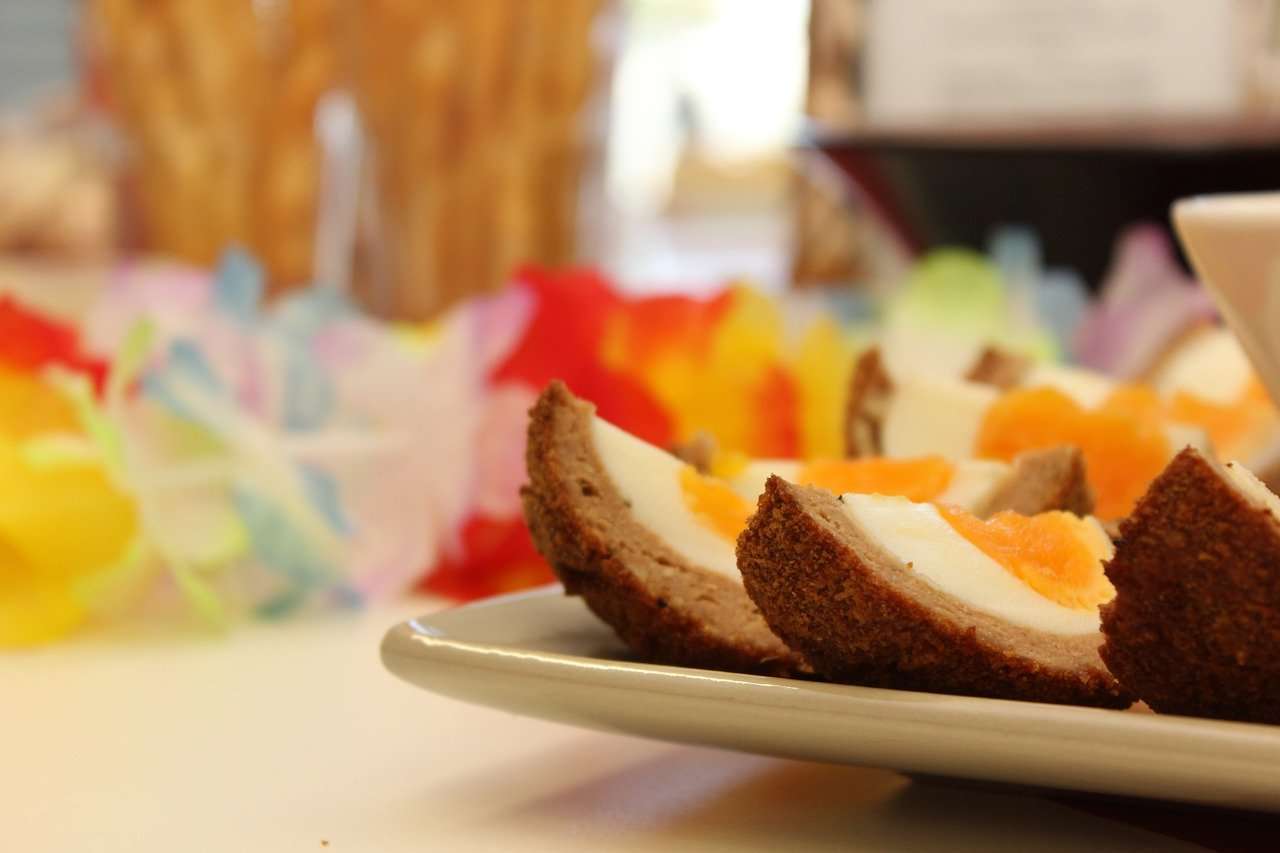
What Is It?
The Scots like sausage and eggs for breakfast. This is an egg wrapped up in a sausage. It’s basically the perfect Scottish breakfast, but made in such a way that it can be enjoyed at any time of the day. Genius. But don’t let the simplicity of the Scotch egg fool you, because these little blighters taste surprisingly good, and they’re possibly the most perfect picnic food ever.
Scotch eggs have been popular in Scotland for well over a hundred years, although the English department store Fortnum and Mason claim to have created the first recipe for one of their outlets in 1738. But wherever the recipe originates from, the humble Scotch egg is just as popular today as it was over two hundred years ago.
There are even regional variations such as the Manchester Egg which uses a pickled egg and the Worcester Egg which uses white pudding. But those are just wrong.
Fun fact: In the 19th century, Scotch eggs used fish paste instead of sausage meat.
Ingredients
- 6 eggs.
- 1 pound pork sausage, formed into 6 patties.
- 4 eggs, beaten.
- 2 cups seasoned bread crumbs.
- vegetable oil for frying.
How Do I Make It?
- Place the eggs in a saucepan and cover with water. Bring to the boil. Cover, remove from the heat and let the eggs sit in the hot water for 10 to 12 minutes. Remove the eggs from the hot water and allow them to cool. Peel the shells from the eggs once cooled.
- In a large deep pan, heat about 1 inch of vegetable oil until it’s hot.
- Place the whole boiled eggs on top of the sausage patties. Roll the meat to form a ball around the egg and dip it into the beaten egg wash, then the seasoned breadcrumbs. Deep-fry in the hot vegetable oil until the meat is fully cooked. Serve hot or cold.
Forfar Bridies
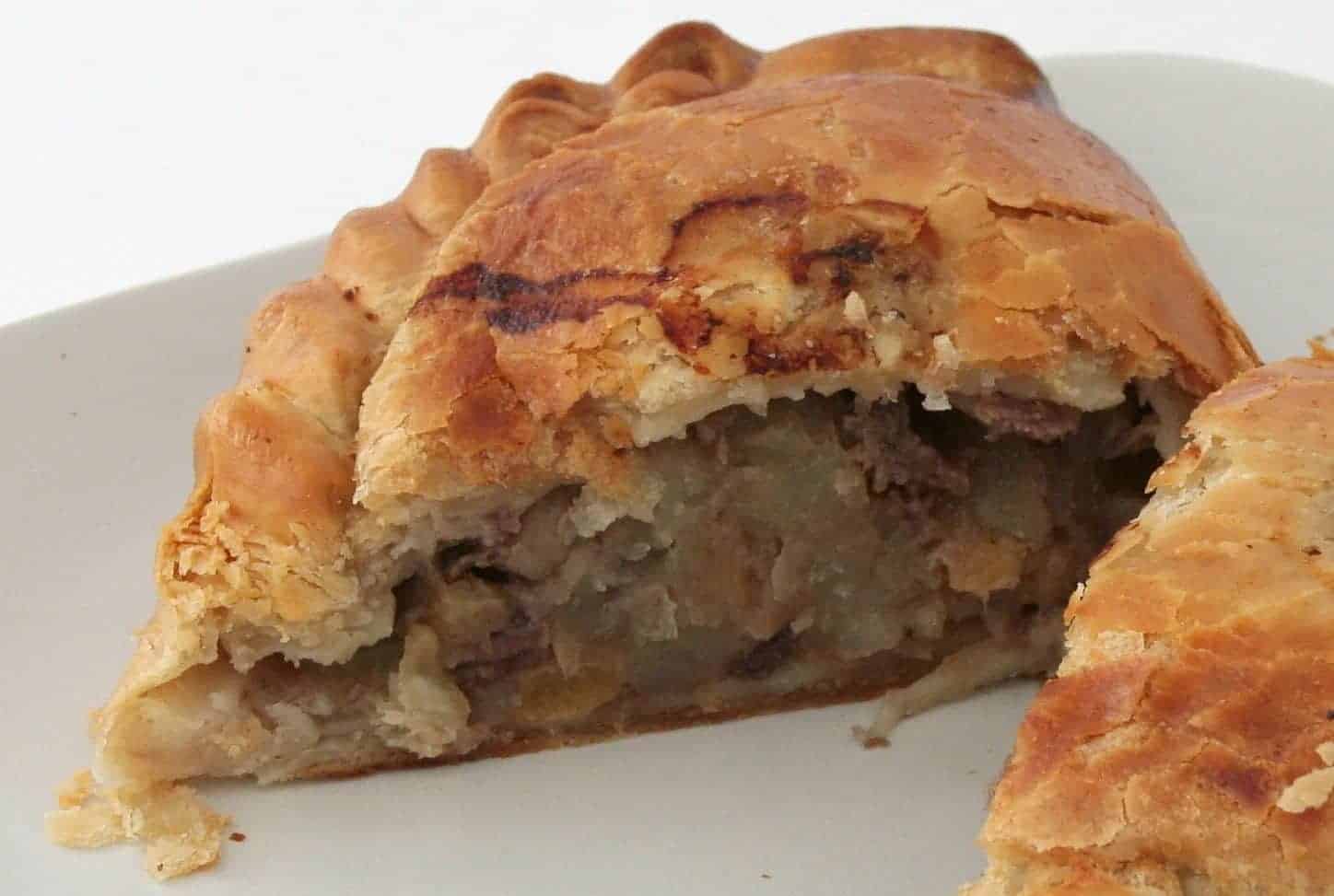
What Is It?
At one time in a previous life, I lived in Cornwall and one of my favourite foods was the humble Cornish pasty. After moving to the opposite end of Britain I thought I’d never be able to sample those meat-filled pastry delights ever again, but I soon found out they make something similar in Scotland, only up here they call it a Bridie.
A Bridie is basically a Cornish pasty without the potato and a flaky pastry instead of the shortcrust pastry they use down south. But despite their differences, Scottish bridies are delicious, especially when they’re fresh out of the oven.
The filling consists of minced steak and beef suet with traditional Scottish herbs and spices (i.e. salt and pepper), and the pastry is folded into a triangular shape. Just like a Cornish pasty, they can be eaten hot or cold which makes them perfect for packing into your picnic basket.
Fun fact: Supposedly invented in Forfar, the bakers there stick a finger into the middle of their bridies to signify that it’s been made without onions. Two finger holes mean that it has onions in it.
Ingredients
- 1 onion, chopped.
- 2 tablespoons beef broth.
- 1 pound lean beef, chopped.
- 1 teaspoon Worcestershire sauce.
- 1/4 teaspoon salt.
- 1/4 teaspoon ground black pepper.
- 1 sheet flaky pastry.
- 1 egg white, lightly beaten.
How Do I Make It?
- Preheat the oven to 175°C.
- In a large heavy pan over a medium heat, cook the beef chunks until they’re evenly brown and then drain the excess fat. Reduce the heat and stir in the onion, beef broth, and Worcestershire sauce. Season with salt and pepper.
- On a lightly floured surface, roll the pastry out to 1/8 inch thickness and cut it into 6-inch circles. Place approximately 1/2 cup of the beef filling on one-half of each pastry circle. Fold the pastry over the filling and crimp the edges to seal. Brush lightly with beaten egg white and cut three slits in the top to allow the steam to escape. Place the Bridies on a baking sheet.
- Bake in a preheated oven for 30 to 35 minutes, or until golden brown.
Scottish Shortbread
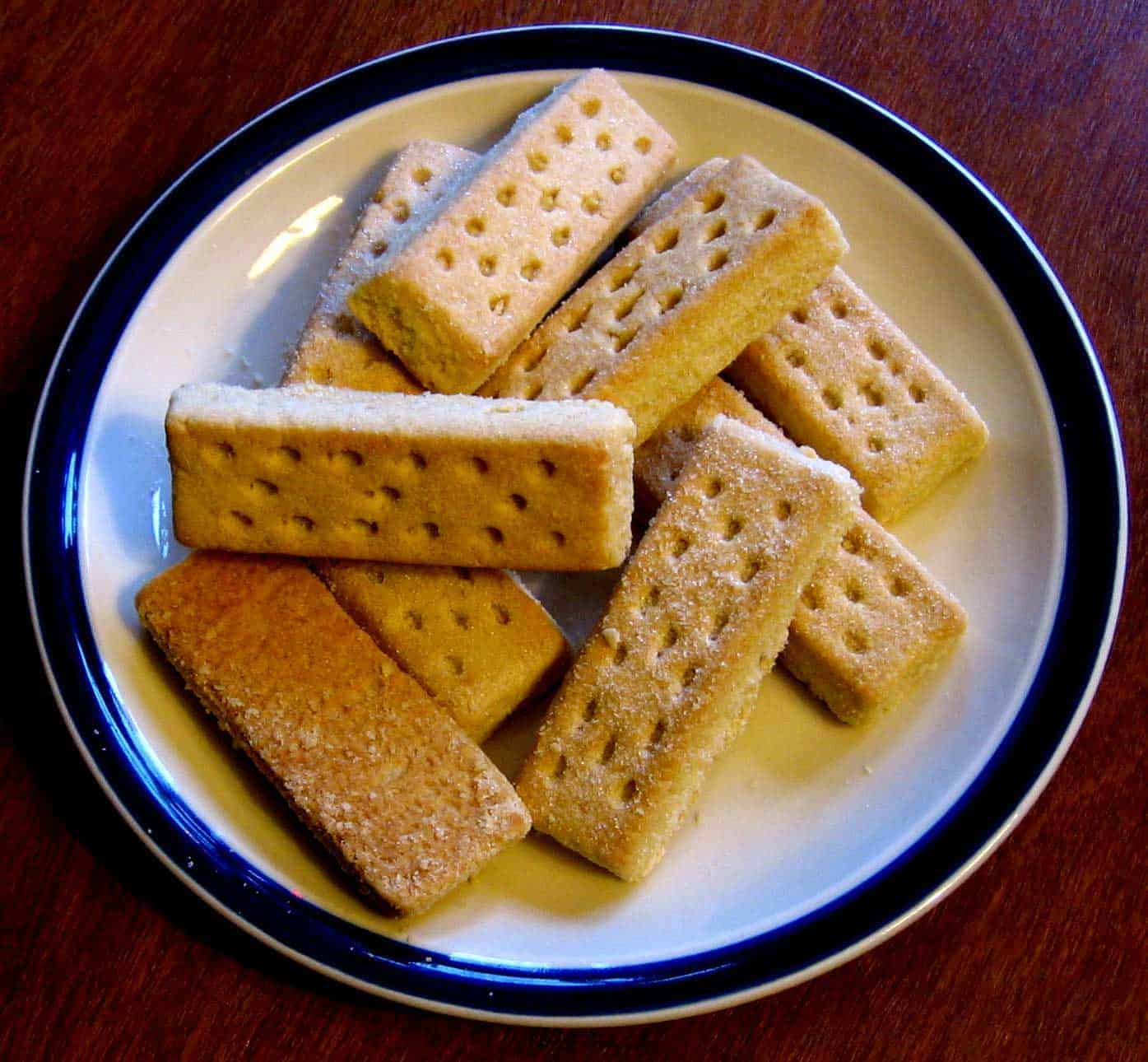
What Is It?
Scottish shortbread is well-known as the tea drinker’s secret ally, thanks to the fact that these crumbly biscuits can absorb a staggeringly huge amount of liquid. Even more than a digestive. Or maybe a hob-nob.
Traditionally made with butter, sugar, and oat flour, shortbread has been made in Scotland for nearly three hundred years, with the first known recipe dating back to 1736. Even though these tasty treats are usually associated with Christmas, they can usually be found on most high streets thanks to the Walkers Shortbread Company, which exports them around the world in tartan-encrusted souvenir tins.
There are three typical shapes that shortbread is cut into. The long and thin tea-dunking Shortbread fingers that we all know and love, the less well-loved but equally tasty circle, and the triangular biscuit that’s traditionally eaten with a glass of red wine by the French. But we won’t talk any more about that one.
Fun fact: The refinement of the Shortbread recipe that we know today is credited to Mary, Queen of Scots.
Ingredients
- 2 1/2 cups all-purpose flour.
- 1 cup butter, at room temperature.
- 1/2 cup white sugar.
- 1 tablespoon white sugar.
How Do I Make It?
- Preheat the oven to 150 °C.
- Mix the flour, butter, and sugar together in a bowl until the dough is well combined. Press the dough into an ungreased 11 1/2x 7 1/2-inch pan. Sprinkle with 1 tablespoon of sugar.
- Bake in the preheated oven until the edges are light brown, for around 20 to 30 minutes. Cut the shortbread into fingers while still warm. Cool completely before removing the fingers from the pan.
Cock a Leekie Soup
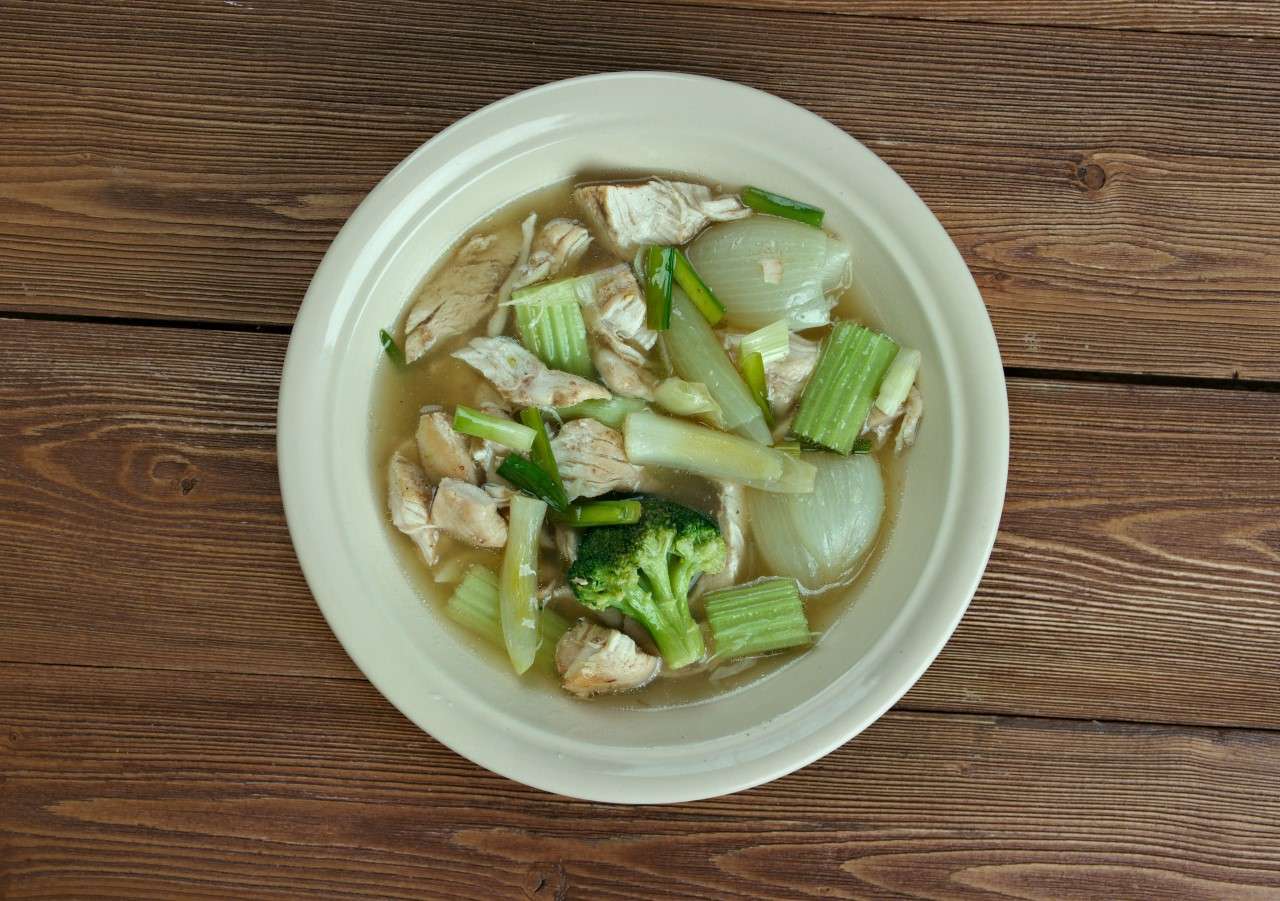
What Is It?
Known as ‘Scotland’s National Soup’, Cock-a-leekie is believed to have originated in France, where it had been a staple diet of farmworkers long before the recipe was ever imported to Scotland. This hearty broth is usually made with bits of leftover chicken along with leeks, rice (or barley), and onions, although rather revoltingly, the traditional recipe also adds prunes.
There have been several variations of the original recipe over the years, depending on the number of raw ingredients that were available at the time, so when chicken was difficult to get hold of, it was often exchanged for pheasant, while more modern recipes sometimes use beef.
You can even swap out meat entirely for a vegetable alternative, and you’ll find several recipes online that add potatoes with plenty of oatmeal for thickening. Cock-a-leekie soup is most definitely one traditional Scottish food that will warm the cockles of your heart.
Fun fact: The first Scottish recipe for Cock-a-leekie soup dates back to 1598.
Ingredients
- 4 pounds chicken thighs.
- 10 cups water.
- 1 onion, chopped.
- 1/3 cup barley.
- 1 can condensed chicken broth.
- 4 sticks celery.
- 7 leeks, sliced.
- 1 sprig fresh thyme, chopped.
- 1 tablespoon chopped fresh parsley.
- 1 teaspoon salt.
- 1/2 teaspoon ground black pepper.
How Do I Make It?
- In a large pan over a high heat, combine the chicken, water, onion, and barley. Bring to a boil, then reduce the heat to low and simmer for 1 hour. Remove the chicken, discard the bones and skin, and chop the meat into bite-size pieces and return to the pan.
- Add the chicken broth, leeks, celery, thyme, parsley, salt and ground black pepper. Simmer for 30 minutes. Serve while hot.
Clootie Dumpling
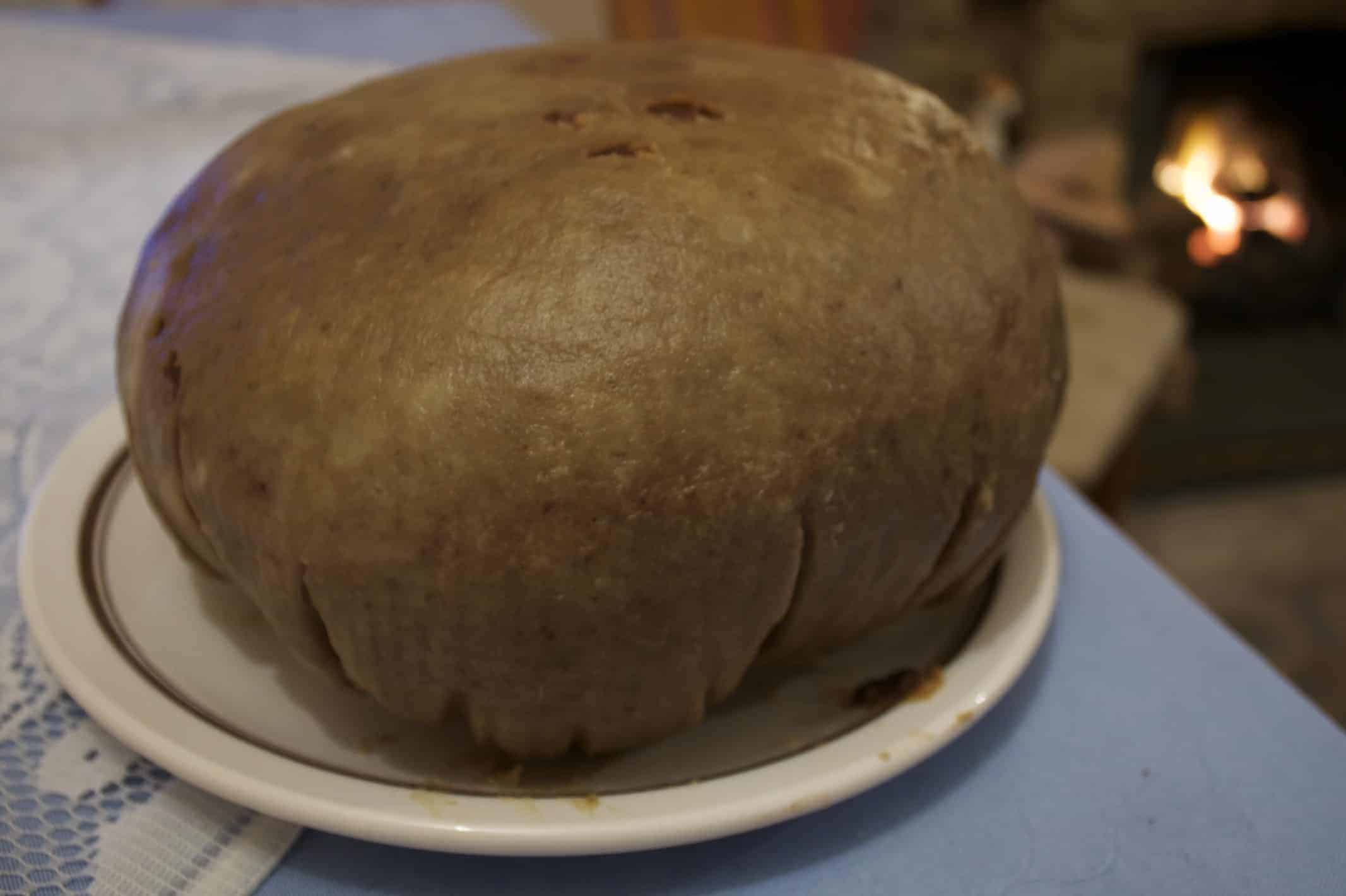
What is it?
This is a traditional Scottish dessert that’s usually associated with Christmas and Hogmanay thanks to the copious amount of dried fruits and spices that it contains, and also the way that it’s steamed in a cloth, a bit like a Christmas pudding.
While it’s not quite as rich as something you’d find in a bowl on Christmas day, it’s no less delicious, and the fact that it’s a bit plainer means it’s easier to eat with your normal evening meal.
The ingredients for clootie dumplings have barely changed in the 270 years since the first recipe was created, and neither has the method of cooking them. Where many other puddings are merely heated in an oven or microwaved, Scots still favour wrapping these desserts in a cloth and boiling them in a big pan. You can even fry clootie dumplings and serve them with bacon and eggs for a real gut-busting breakfast. It’s truly a pudding for every occasion.
Fun fact: A ‘cloot’ is an old Scots word for a pillowcase, which was often used to steam this pudding in.
Ingredients
- 4 cups self-rising flour.
- 1 3/4 cups dried currants.
- 1 2/3 cups raisins.
- 1/4 pound shredded suet.
- 1 cup dry breadcrumbs.
- 1 egg, lightly beaten.
- 1/2 cup milk.
- 1 egg, lightly beaten.
- 1 cup white sugar.
How Do I Make It?
- Bring a large pot of water to the boil.
- In a large bowl, combine the flour, currants, raisins, suet, breadcrumbs and sugar. Mix the egg and milk with mixed spice, baking powder, salt and molasses. Stir the mixture into the flour to form a wet dough.
- Dip a heavy cotton cloth in boiling water and then sprinkle it with flour. Place the dough in the centre of the cloth and draw the opposite corners together to form a ball, leaving a bit of room for the dumpling to expand. Tie tightly with string to seal.
- Place the dumpling into the boiling water, reduce the heat to a low boil, and cook for 3 1/2 hours.
- Remove the dumpling from the water, remove the cloth, and dry the dumpling in a 150 °C oven until the surface is no longer wet. Serve piping hot.
Frequently Asked Questions
What Scottish foods are there?
Arbroath smokies (a type of smoked haddock), porridge, haggis, black pudding, oatcakes, scotch pie, Cullen skink, stovies, tablet, shortbread, cranachan.
What is haggis?
Haggis is a traditional Scottish savoury pudding that’s usually served with neeps (mashed turnips) and tatties (mashed potato). Haggis consists of sheep offal (liver, heart and lungs) mixed with suet, oatmeal, onion, pepper, and spices, all encased in a sheep’s stomach.
What is stovies?
Stovies is a popular dish served throughout Scotland. Recipes vary slightly across regions but the main ingredients are potatoes, fat, onions and meat. It is traditionally served with oatcakes.
What is tablet?
Tablet is a sugary confection that is similar to fudge but has a hard crumbly texture. It is usually made from sugar, condensed milk and butter with vanilla essence to taste. Some variations add Scotch whisky

